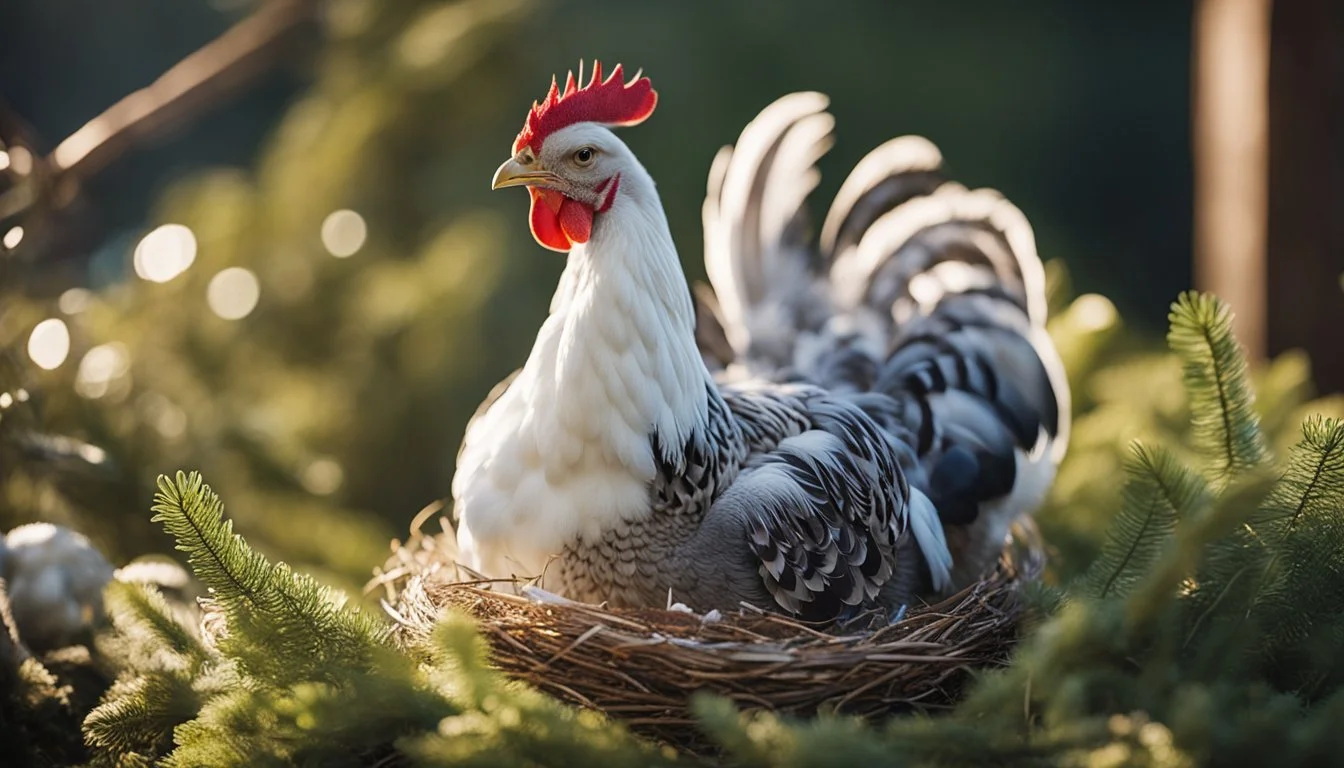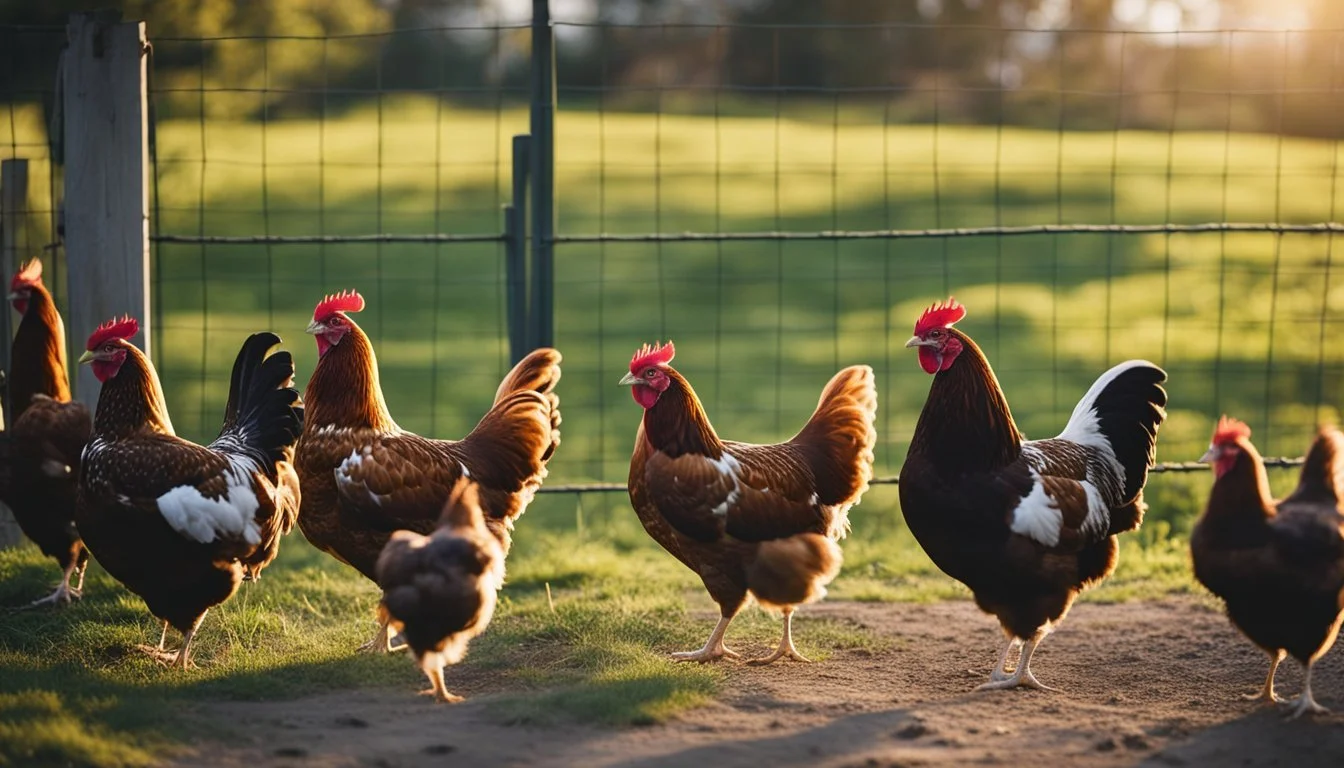7 Tips for Handling Broody Hens
Expert Strategies for Chicken Comfort
When raising poultry, one of the challenges that might arise is handling a broody hen. Broody hens exhibit strong maternal instincts, often spending considerable time in the nest, showing protective behavior, and even pulling out their own feathers to keep their eggs warm.
For those unfamiliar, dealing with a broody hen can seem daunting, but it's a manageable aspect of chicken keeping. Learning how to effectively manage and support a broody hen not only benefits the bird but can also enhance the overall health and productivity of your flock.
1) Provide a Quiet Nesting Area
Creating a comfortable nesting area is crucial for a broody hen. Broody hens prefer a secluded corner, away from the rest of the coop. This space should be dark and peaceful.
Ensuring the nesting area is quiet helps the hen feel safe. External disturbances can cause stress, hindering her brooding behavior. Place the nesting box in an area with minimal foot traffic.
Maintaining proximity to food and water is important. Broody hens are often reluctant to leave their nest. Keeping necessities close encourages her to eat and drink without abandoning her duties.
2) Ensure Proper Nutrition
Proper nutrition is vital for broody hens. Their energy needs increase due to the time they spend sitting and the limited movement. They must receive a balanced diet to maintain their health.
Provide high-quality layer feed with sufficient protein and calcium. This helps support their overall well-being and ensures they can produce strong, healthy chicks.
Supplement their diet with treats like fruits, vegetables, and mealworms. These can provide extra nutrients and encourage the hen to leave the nest briefly to eat.
Always ensure fresh water is available. Hydration is crucial, especially when broody hens may neglect their basic needs while focusing on their eggs.
Consider adding vitamins and electrolytes to their water. This can help them stay healthy and cope better with the stress of broodiness.
3) Remove Eggs Regularly
Removing eggs regularly is crucial in managing broody hens. When a hen sits on a nest of eggs, her body temperature rises, intensifying her broody behavior. By removing the eggs, the hen loses the stimuli that trigger her brooding instincts.
A broody hen should have her nest checked and eggs removed at least once a day. This action discourages her from staying in the nesting area for an extended period. The regular removal of eggs disrupts the incubation routine, reducing the hen's commitment to sitting on the nest.
Another reason to remove eggs frequently is to prevent the accumulation of new eggs. Other hens might lay eggs in the same nesting box, leading to a pile-up. Marking original eggs and removing fresh ones can help maintain control over the situation.
In addition to controlling broodiness, this practice also ensures better egg quality. Eggs left under a broody hen for too long can become damaged or start developing if fertilized. Regular egg collection keeps the nest clean and improves overall flock health.
4) Check for Health Issues
Keeping a close eye on a broody hen's health is important. Regular checks ensure that any health problems are caught early.
Monitor the hen for signs of malnutrition. Ensure she is leaving the nest to eat and drink. Dehydration and weight loss can become serious concerns quickly.
Look for physical signs of illness. Check for symptoms like lethargy, labored breathing, or unusual droppings. These signs may indicate respiratory issues or infections.
Check for parasites regularly. Broody hens can attract mites or lice due to their prolonged nest sitting. Inspect the hen and nest for these pests.
Address any health concerns promptly. If problems arise, seek advice from a veterinarian or an experienced poultry keeper. This helps maintain the hen's overall well-being.
5) Use Broody Hen Cages
Broody hen cages, also known as broody breakers, are an effective way to manage broodiness. These cages typically have a wire bottom, making the environment less comfortable for nesting behaviors.
Place the broody hen in a separate cage with ample airflow. This discourages her from sitting and helps break the broody cycle.
Cool environments can further aid this process. Adding a frozen water bottle to the cage will help cool down the hen, as broodiness often increases her body temperature.
Ensure the cage is placed in a safe and well-ventilated area. It’s important to monitor the hen closely, providing her with food and water while she’s in the cage.
6) Experiment with Cooling Techniques
Cooling techniques can help break a broody hen out of her broody state. One effective method is to place the hen in a cage with a wire bottom. The air circulation beneath the hen cools her underside, making her less likely to remain broody.
Placing cold packs or frozen vegetables under a broody hen can achieve similar results. These cooling elements should be wrapped in a cloth to avoid causing discomfort or harm.
Another approach involves dunking the hen's belly in cool water for a few minutes. This can help lower her body temperature and disrupt the broody cycle.
Each hen may respond differently to cooling methods. Monitoring the hen's response and adjusting the technique as needed ensures a safe and effective process. Always prioritize the hen’s well-being during cooling experiments.
7) Allow Supervised Outdoor Time
Allowing supervised outdoor time can be beneficial for broody hens. It gives them a change of scenery and helps to break the broody cycle. During this time, they are encouraged to leave the nest and engage in regular chicken behaviors, such as scratching and foraging.
Supervision ensures the hen's safety. Predators or aggressive flock mates can pose risks, so keeping a close watch mitigates potential dangers. Outdoor time should be limited to a secure, enclosed area to prevent the hen from wandering too far.
This approach also helps regulate their body temperature. Spending time outside in the shade can cool down a hen whose broodiness has raised her body temperature. Additionally, increased exposure to light can disrupt the hormonal signals that trigger broodiness.
It's crucial to monitor the hen's health. Ensuring she eats and drinks adequately during outdoor time prevents weight loss and dehydration. A few short sessions throughout the day can prove effective in encouraging her to abandon the nest without causing stress.
Lastly, engaging with other chickens can promote social interaction. This can distract the broody hen from her nesting instincts and integrate her back into the normal activity of the flock.
Understanding Broody Behavior
Broody hens exhibit specific behaviors triggered by a natural instinct to hatch eggs. Recognizing these behaviors and understanding the causes can help in effectively managing a broody hen.
What Causes Hens to Become Broody
Hens become broody due to hormonal changes that signal it is time to hatch eggs. This instinct is often triggered by environmental factors such as daylight length, temperature, and the presence of eggs in the nest. During this period, a hen's body produces increased levels of prolactin, which stimulates nesting behavior.
Additionally, certain breeds are more predisposed to broodiness. For instance, Silkies and Cochins often show higher tendencies towards this behavior. Knowing the breed-specific inclinations can help anticipate and manage broody behavior more effectively.
Signs of a Broody Hen
A broody hen typically stays in the nest box, sometimes even without any eggs. She may growl or become aggressive if disturbed, displaying defensive behaviors to protect her nest. Feathers may be pulled out from her breast to create a warmer environment for the eggs.
Physical changes include a puffed-up appearance and reluctance to leave the nest, only leaving briefly to eat, drink, or relieve herself. Observing these signs can quickly identify a broody hen, allowing for prompt action to ensure her health and the well-being of the flock.
Challenges and Implications
Broody hens present unique challenges, primarily affecting egg production and posing health risks. Addressing these issues is essential for maintaining a healthy and productive flock.
Impact on Egg Production
Broody hens tend to sit on nests for long periods, which disrupts their usual egg-laying cycles. This behavior can lead to a noticeable decline in egg production, as they may not lay eggs regularly during this period.
Moreover, broody hens often hoard eggs, taking eggs laid by other hens to their nest. This can reduce the total number of eggs available for collection. In mixed flocks, certain breeds may be more prone to broodiness, exacerbating the issue.
To manage this, farmers can encourage egg production by moving the broody hen to a different area or providing artificial light to stimulate laying. These steps help ensure a stable egg supply, even if one or more hens become broody.
Health Risks for Broody Hens
Extended periods of broodiness can lead to health issues for hens. They may eat and drink less, resulting in weight loss and potential malnutrition. Dehydration is another risk, as they leave the nest infrequently.
Broody hens also face an increased chance of developing mites and other parasites due to prolonged nesting in one spot. These parasites can cause further health problems if not managed promptly.
Managing broodiness involves ensuring hens have access to food and water and periodically checking for signs of parasites. Moving a broody hen to a cooler, well-ventilated space can help reduce body temperature, alleviating some health risks. Regular health checks are crucial in detecting and addressing these issues early.
Preventive Measures and Management
Preventing broodiness and managing broody hens requires a combination of environmental adjustments and behavioral interventions. By creating a less broody-friendly environment and employing targeted actions, poultry keepers can reduce the incidence of broody behavior and manage it efficiently when it does occur.
Environmental Adjustments
Creating an environment that discourages broodiness starts with nest box management. Regularly remove eggs from the nest to reduce the hen’s inclination to sit. Use well-ventilated nest boxes and ensure they are not too cozy or dark, which can encourage nesting behavior.
Lighting control is another crucial factor. Increasing light exposure can disrupt a hen's broody cycle. Make the coop bright during the day using natural light or electric lighting. Ensure the coop is well-ventilated and maintains a cool temperature, as warmth can trigger broodiness.
Nesting box design can also help. Consider using roll-away nest boxes, where eggs roll out of the hen's reach immediately after being laid. This discourages the hen from sitting on them and reduces the chances of her becoming broody.
Behavioral Interventions
Addressing a broody hen's behavior directly can be effective. Using cooling methods, such as placing a frozen water bottle under her favorite nesting spot, can lower her body temperature and disrupt broody tendencies.
Isolation and routine disruption can also be beneficial. Move broody hens to a separate pen without nesting materials, which can break the broody cycle. Ensure they have access to food and water but keep the conditions less inviting for nesting.
Egg substitutes like plastic eggs or golf balls can confuse the hen and discourage prolonged sitting. Removing the broody hen from the nest several times a day can also help.
By combining these environmental and behavioral strategies, poultry keepers can effectively manage and reduce the occurrence of broodiness in their hens.








